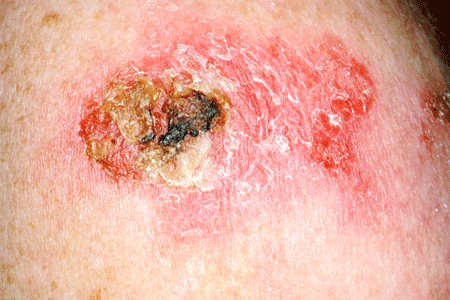
Liver Cancer Symptoms and Treatment
Although liver cancer is not common in the United States, it is the 6th deadliest cancer in the US with an estimated 19,000 deaths occuring in 2010. Liver cancer patients have a five year survival rate of 13.8 percent from the time they are diagnosed and the long-term trend of liver cancer incidence in the United States is increasing. Awareness of the symptoms can lead to earlier treatment and improved survival rates.
In 2010, an estimated 17,430 men and 6,690 women (24,120) will be diagnosed with liver cancer. Primary liver cancer is cancer that originates in the liver, as opposed to secondary liver cancer in which the tumor develops in an adjacent organ (pancreas, colon, stomach, lungs, breasts), and metastasize (spreads) to the liver. Liver cancer (or any cancer) is always named for the organ in which it originates. In United States, secondary liver cancer is more common than primary liver cancer.
There are two types of liver cancer with hepatocellular carcinoma or hepatoma, the most common type and mostly occurs in men and patients with cirrhosis of the liver. it usually confines itself to the liver and rarely spreads to other organs. The other type develops in the small bile ducts within the liver and is called bile duct cancer or intrahepatic bile duct cancer, and is more common among women.
The symptoms of liver cancer are often asymptomatic in the early stages, meaning they are not noticable. when they do become noticable, the cancer is already in the later stages, unfortunately. In spite of this, more awareness about the symptoms of liver cancer can lead to an early diagnosis and prognosis. The most common liver cancer symptoms include:
. Abdominal pain (most common sign of liver cancer)
. Unexplained weight loss
. Excessive skin itching
. Confusion and increased sleepiness
. Weakness and feeling tired
. Unexplained muscle wasting
Treatment methods for liver cancer vary by patient and depend on: tumor size and location, cancer stage, patient’s health, and age. The main treatment methods for liver cancer are described below.
Surgery: a partial hepatectomy involves removing a portion of the liver where the tumor is located. a total hepatectomy the complete removal of liver followed by a liver transplant. two other types of surgery involve killing the tumor without a hepatectomy. Cryosurgery kills the cancerous cells with liquid nitrogen by “freezing” them to death. RadioFrequencyAblation (RFA) does the opposite by “cooking” the cancer cells to death using a radiofrequency current.
Chemotherapy and Radiation: Chemotherapy uses a single drug, or a combination of drugs, is a systemic treatment (delivered throughout the body) that aims to kill cancer cells or stop abnormal growth by halting the cancer cell division process. Radiation Therapy uses high-energy rays or particles to destroy cancerous cells. Both chemotherapy and radiation can be administered and delivered in a variety of ways, best suited to the patient. Both treatments also have notorious side effects including: hair loss (chemo), weight loss, nausea and vomiting, vulnerability to infections, weakness and severe fatigue.
Percutaneous Ethanol Injection uses ethanol to destroy the tumor through dehydration and altering the cellular structure. The ethanol is delivered by a needed directed at the tumor.
Biologic Therapy (also called immunotherapy) uses substances produced in a laboratory that copy those naturally produced by the body to boost, direct, or restore the natural defenses and immune system of the body to fight the cancer, or decrease the side-effects caused by other cancer treatments.
Related Articles
- Movin' Meat: Cancer Sucks